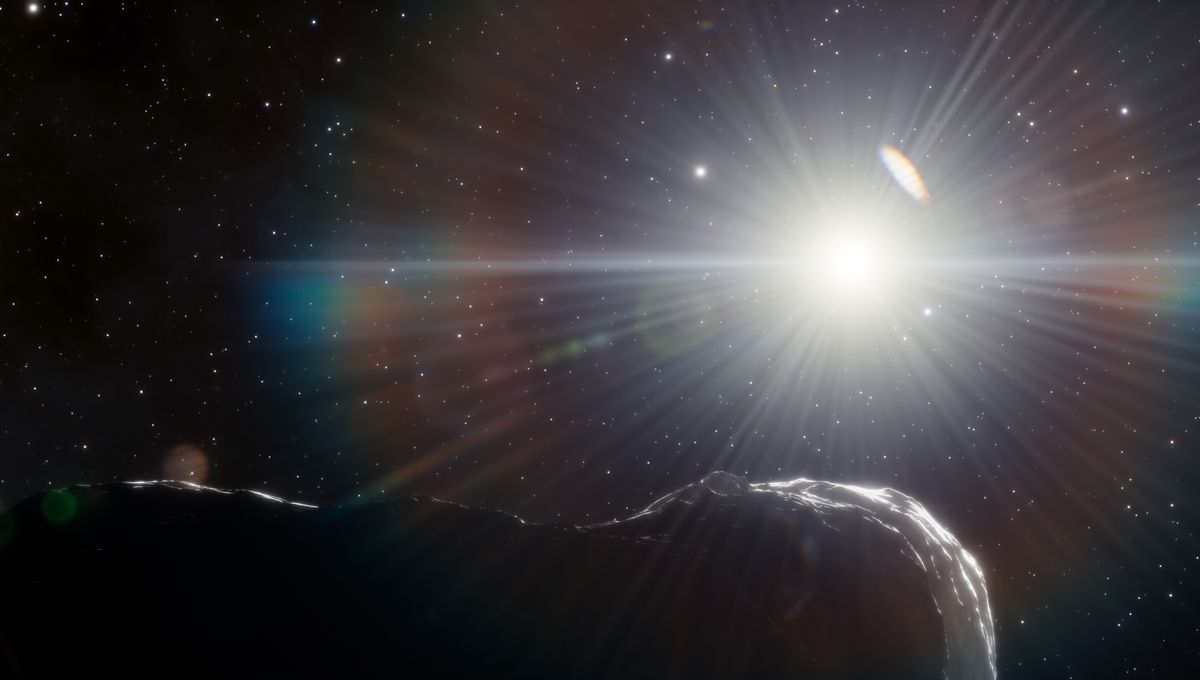
Astronomers have discovered three new near-Earth asteroids hiding in the glare of the Sun, including the biggest “potentially hazardous” asteroid discovered in eight years.
Thanks to the Cerro Tololo Inter-American Observatory, the discovery adds to the known Near-Earth objects, in particular, those that stay between the orbit of Earth and Venus. The asteroid, known as 2022 AP7, is 1.5 kilometers (almost one mile) wide, and its orbit crosses Earth’s own.
Studying this region is difficult due to the brightness of the Sun, so observational campaigns only happen in the brief 10-minute window after sunset and before sunrise. This led to the discovery last year of asteroid 2021 PH27, the closest known body to the Sun, which is also wider than a kilometer but luckily never comes close to us. A third intriguing object has been called 2021 LJ4 and is slightly smaller.
“Our twilight survey is scouring the area within the orbits of Earth and Venus for asteroids,” said Scott S. Sheppard, an astronomer at the Earth and Planets Laboratory of the Carnegie Institution for Science, in a statement. “So far we have found two large near-Earth asteroids that are about 1 kilometer across, a size that we call planet killers.”
Potentially hazardous objects are near-Earth space rocks – asteroids or comets – that have orbits that make a close approach to Earth and are a size that would cause significant damage if they hit us. When they are 1 kilometer or more, they are deemed “planet killers”.
“There are likely only a few NEAs with similar sizes left to find, and these large undiscovered asteroids likely have orbits that keep them interior to the orbits of Earth and Venus most of the time. Only about 25 asteroids with orbits completely within Earth’s orbit have been discovered to date because of the difficulty of observing near the glare of the Sun.”
The discoveries used the Dark Energy Camera (DECam) mounted on the Víctor M. Blanco 4-meter Telescope in Chile. The DECam was designed to study galaxies and try to understand what mysterious dark energy is but it works pretty well at spotting asteroids too.
“Our DECam survey is one of the largest and most sensitive searches ever performed for objects within Earth’s orbit and near to Venus’s orbit,” said Sheppard. “This is a unique chance to understand what types of objects are lurking in the inner Solar System.”
“After ten years of remarkable service, DECam continues to yield important scientific discoveries while at the same time contributing to planetary defense, a crucial service that benefits all humanity,” added Chris Davis, NSF Program Director for NOIRLab.
Understanding the population of asteroids within Earth’s orbit is very important, not just to keep the planet safe. Knowing how many objects there are and precisely where they are tells us about how they got there and where they might be in the future.
The study is published in The Astronomical Journal.
Source Link: New "Planet-Killer" Asteroid Is Largest Discovered In Almost A Decade